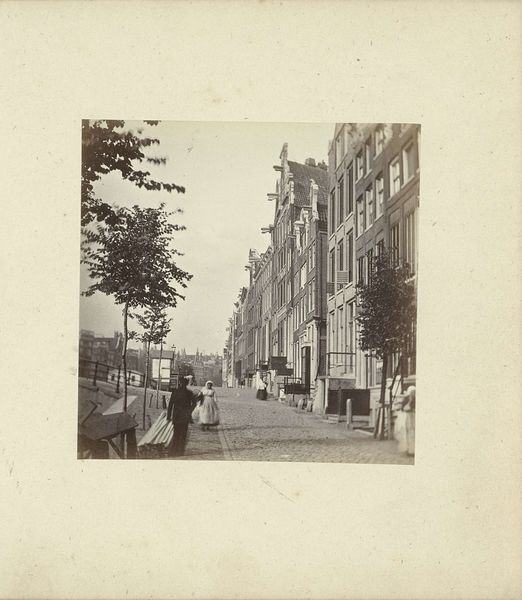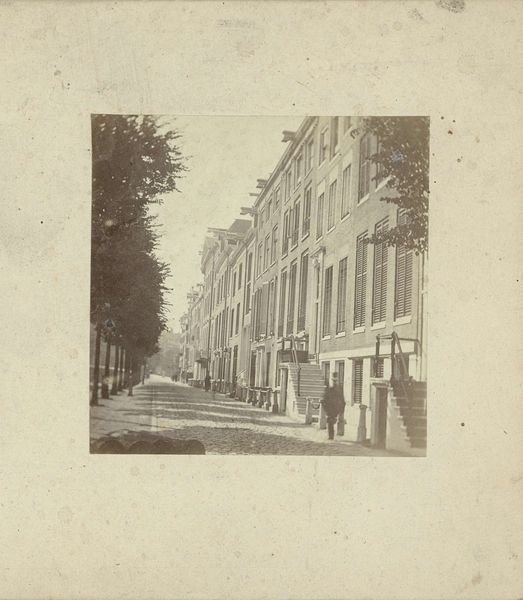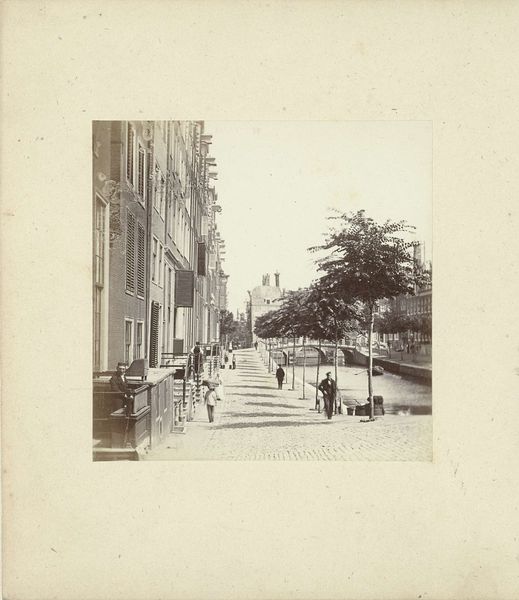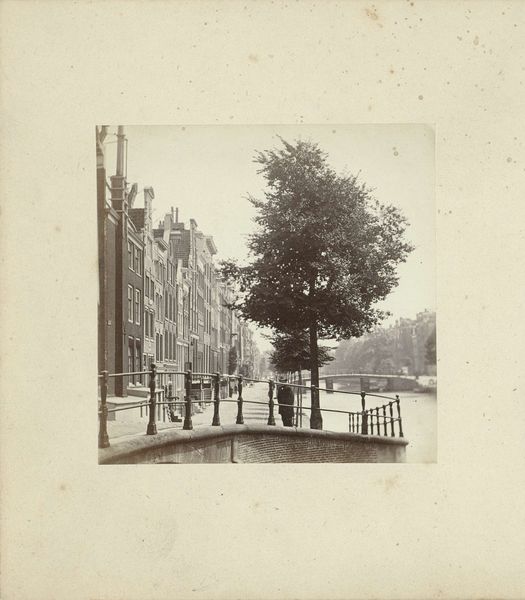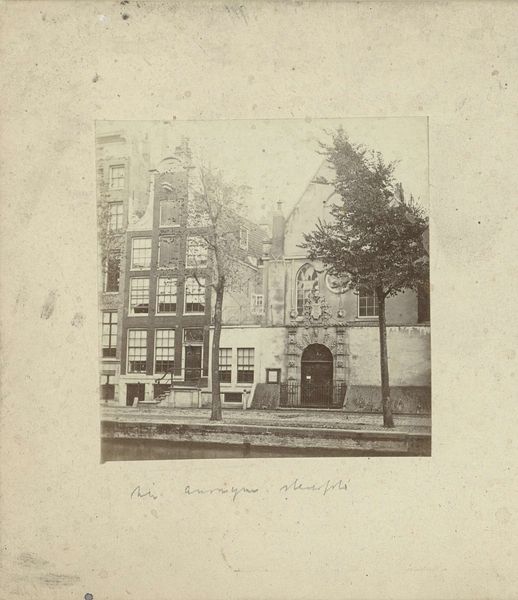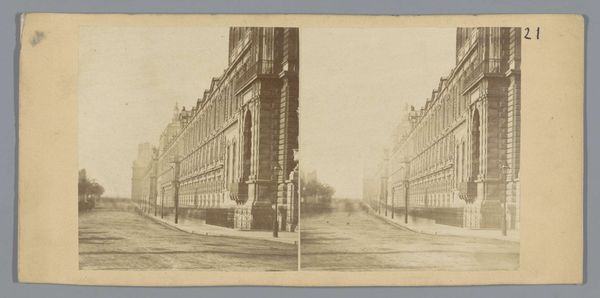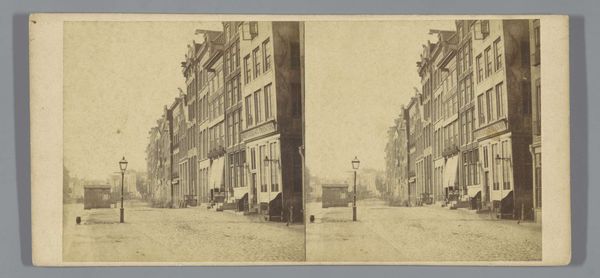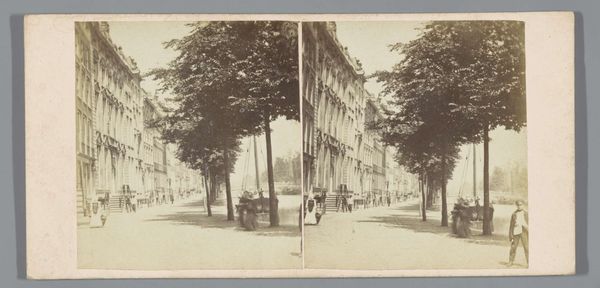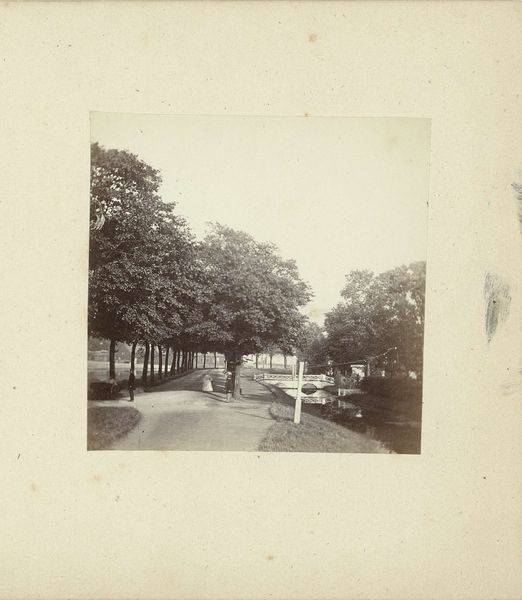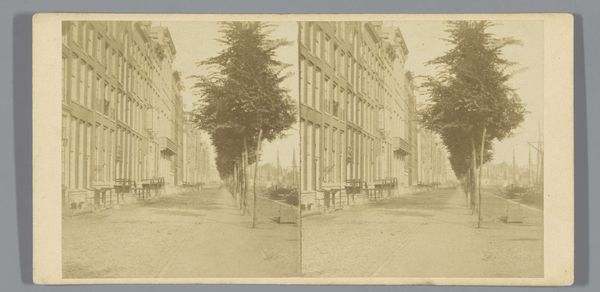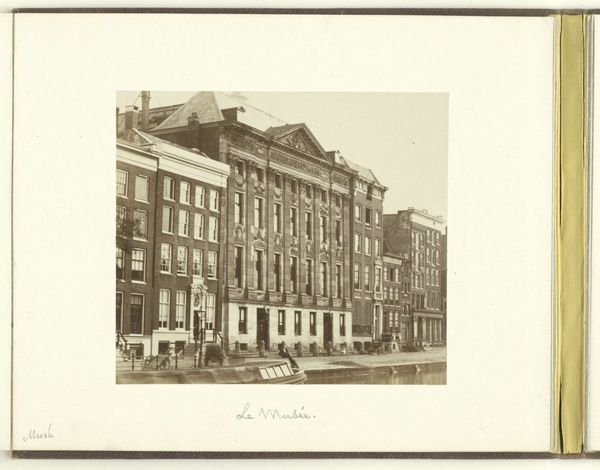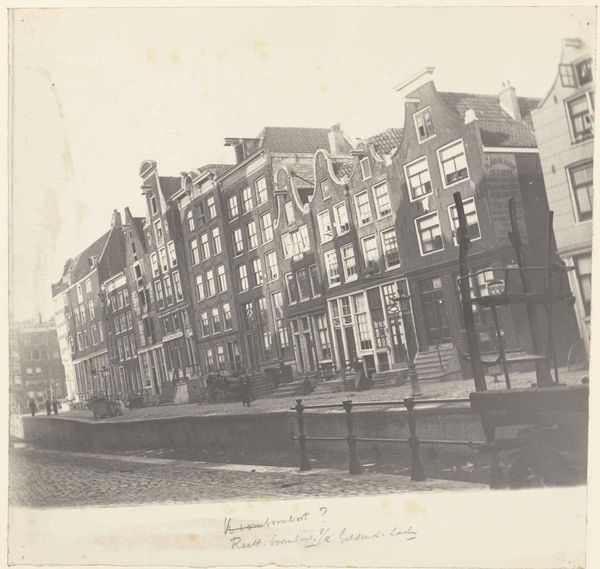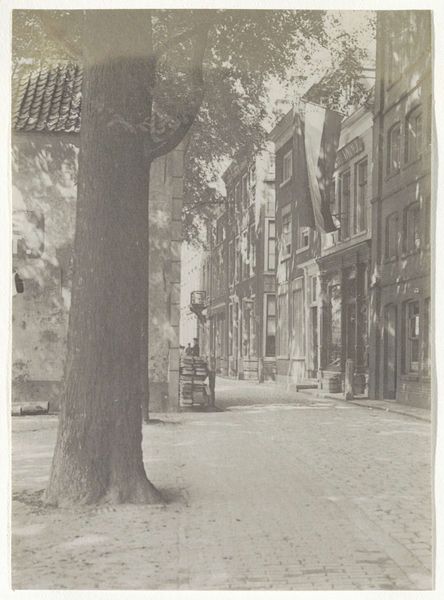
photography
#
aged paper
#
dutch-golden-age
#
landscape
#
photography
#
cityscape
#
street
#
realism
Dimensions: height 82 mm, width 82 mm, height 148 mm, width 234 mm
Copyright: Rijks Museum: Open Domain
Curator: This photograph captures a view of the Keizersgracht near the Berenstraat in Amsterdam, taken sometime between 1860 and 1875 by an anonymous photographer. It's a fascinating glimpse into the city's past, immortalized through early photography. Editor: My first impression is how still and quiet the scene feels. The light, though muted, is crisp. The composition is strikingly formal; even with the slight blur, you get a real sense of space. Curator: Exactly. Look at the people gathered on the left. Consider how access to such imagery – cityscapes and street views– expanded in the mid-19th century. Photography democratized the experience of viewing places beyond one’s immediate surroundings, but, crucially, on whose terms? Editor: That’s interesting to consider. Because these early cityscapes were usually commissioned, we can explore the motivations of the patrons and how photography functioned within specific social and political contexts. Who wanted these images, and why? How were they displayed and circulated? What did they represent? Curator: Precisely. Consider that it portrays an ordered society, perhaps emphasizing stability amid social change. The presence of the canal and orderly street conveys a sense of bourgeois respectability. And the relative absence of street life contrasts sharply with other urban representations, obscuring working-class life, the evidence of labor in urban spaces. Editor: Yet it’s a captivating portrait. Note how the line of trees on the right softens the severity of the architecture and how the light delicately touches each surface, capturing a stillness that seems at odds with urban hustle. We can appreciate it formally, but also examine its intended audience and messaging. Curator: Well said. I am struck by the power of this seemingly simple image to spark critical reflection on issues of access, representation, and the social construction of urban space. Editor: And I'm struck again by how well it captures light. It makes you want to step right in to that scene.
Comments
No comments
Be the first to comment and join the conversation on the ultimate creative platform.
